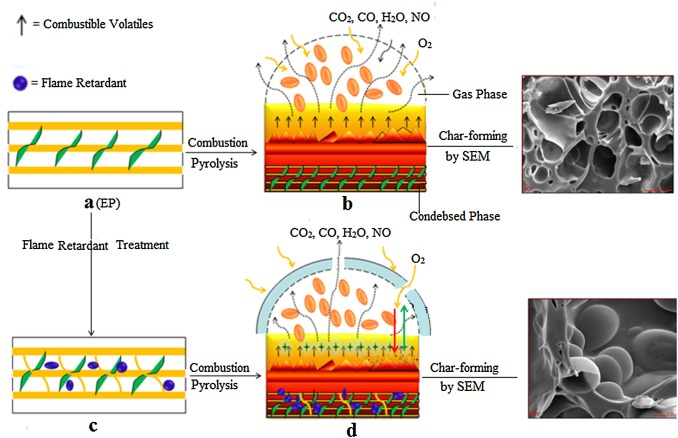Melamine Cyanurate (MCA) is a commonly used environmentally friendly flame retardant, widely used in polymer materials such as polyamide (Nylon, PA-6/PA-66), epoxy resin, polyurethane, polystyrene, polyester (PET, PBT), polyolefin and halogen-free wire and cable. Its excellent flame retardant properties, low toxicity and good thermal stability have made it widely concerned and applied in the fields of electronics, automobiles and construction.
Melamine Cyanurate is a compound generated by the reaction of Melamine and cyanuric acid. The molecular lattice structure formed by hydrogen bonding contains rich nitrogen elements. This allows Melamine Cyanurate to release a certain amount of nitrogen at high temperatures, thereby inhibiting the spread of flames. Its chemical structure determines that it has good thermal stability, mechanical strength and excellent flame retardant effect.

In addition, MCA does not contain harmful halogen elements, so it has been widely used in many occasions with high environmental and health requirements, especially in household appliances, building materials and textiles.
Melamine Cyanurate (MCA) is a commonly used environmentally friendly flame retardant, widely used in polymer materials such as polyamide (Nylon, PA-6/PA-66), epoxy resin, polyurethane, polystyrene, polyester (PET, PBT), polyolefin and halogen-free wire and cable. Its excellent flame retardant properties, low toxicity and good thermal stability have made it widely concerned and applied in the fields of electronics, automobiles and construction.
Melamine Cyanurate is a compound generated by the reaction of Melamine and cyanuric acid. The molecular lattice structure formed by hydrogen bonding contains rich nitrogen elements. This allows Melamine Cyanurate to release a certain amount of nitrogen at high temperatures, thereby inhibiting the spread of flames. Its chemical structure determines that it has good thermal stability, mechanical strength and excellent flame retardant effect.
In addition, MCA does not contain harmful halogen elements, so it has been widely used in many occasions with high environmental and health requirements, especially in household appliances, building materials and textiles.
Flame retardant mechanism of Melamine Cyanurate
The flame retardant mechanism of Melamine Cyanurate is mainly reflected in its decomposition characteristics at high temperatures and the inhibitory effect of the formed carbon layer on flame propagation. Specifically, the flame retardant effect of MCA can be analyzed from the following aspects:
(1) Release of nitrogen to inhibit oxygen supply
MCA molecules contain a large amount of nitrogen elements. During the heating process, nitrogen elements will be released to form gas (mainly nitrogen gas). Nitrogen gas itself does not support combustion, so it can effectively dilute the oxygen concentration around the fire source, reduce the temperature of the flame, and thus slow down the combustion rate and inhibit the spread of combustion. This process is crucial to improving the flame retardant properties of the material, especially under high temperature conditions.
(2) Promote the formation of a carbonized layer
During the pyrolysis process, MCA will decompose and generate a carbonized layer during thermal decomposition. This inert carbonized layer has excellent thermal insulation properties and can form a barrier between the burning area and the unburned area, preventing heat transfer and further limiting the spread of the flame.
In addition, the carbonized layer can also isolate oxygen in the air, forming a physical protective layer, further reducing the contact of oxygen with combustibles, thereby effectively preventing combustion. The formation and stability of this carbonized layer are the key to whether MCA can effectively play a role as a flame retardant.
(3) Chemical reaction produces water vapor
Under high temperature environment, MCA will undergo a decomposition reaction and release a certain amount of water vapor. Water vapor can effectively reduce the local temperature and take away heat by evaporation, thereby cooling the fire source. In addition, the formation of water vapor can also reduce the concentration of oxygen around the fire source, further preventing the spread of flames.
(4) Synergistic effect with other additives
In addition to its own flame retardant effect, Melamine Cyanurate can also synergize with other flame retardants or fillers to enhance the overall flame retardant properties of the material. For example, MCA is often used in combination with phosphorus flame retardants, inorganic fillers, etc., which can improve the thermal stability and mechanical properties of the material and exert a more comprehensive flame retardant effect.
Advantages and Applications of Melamine Cyanurate
(1) Environmentally friendly and non-toxic
Compared with traditional halogen flame retardants, MCA does not release harmful halogen gases (such as hydrogen chloride, hydrogen bromide, etc.) during the flame retardant process, reducing pollution to the environment and potential harm to human health. The nitrogen release process of MCA is relatively safe, so it is more environmentally friendly during use and has less impact on the ecological environment.
(2) Good thermal stability and weather resistance
MCA has high thermal stability, can maintain stable chemical properties at high temperatures, and effectively prevent combustion caused by high temperatures. In some high-temperature working environments, MCA can provide long-lasting protection as a flame retardant.
In addition, MCA also has strong weather resistance, can maintain good performance in long-term use, and adapt to different climatic conditions.
(3) Low smoke
MCA produces less smoke when heated to high temperatures. Compared with traditional halogen flame retardants, it can significantly reduce the release of toxic gases in fires and reduce the harm of smoke to personnel.
As an environmentally friendly and non-toxic flame retardant, Melamine Cyanurate has a unique flame retardant mechanism that shows a wide range of application prospects in modern materials. With the continuous improvement of environmental protection and safety requirements, Melamine Cyanurate will be used in more fields and become one of the core components of flame retardant materials.
For more information on how to choose an MCA that's right for you, please refer to my article "How To Choose Good Quality Melamine Cyanurate?" I hope it will be helpful to you.
Post time: Dec-03-2024

